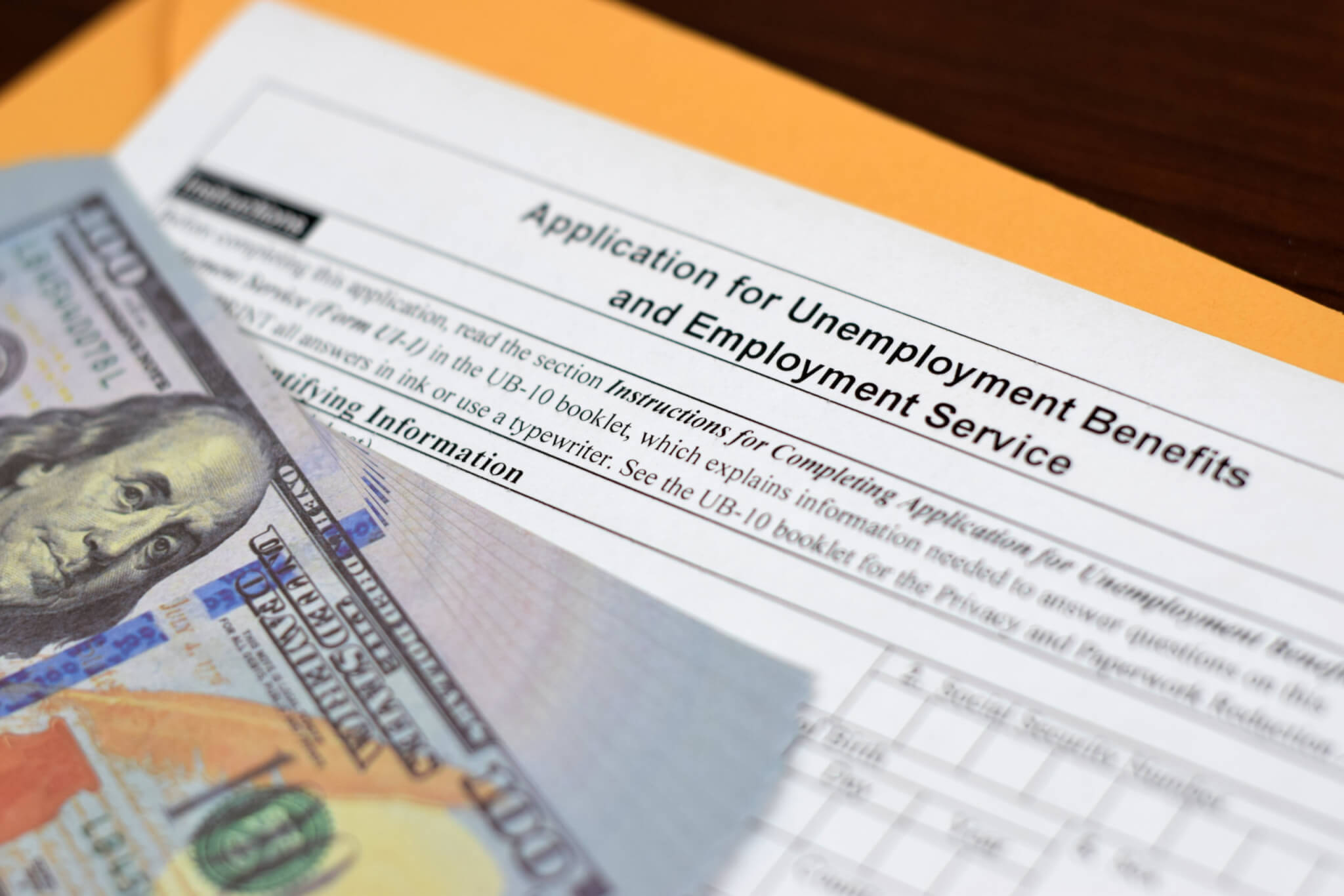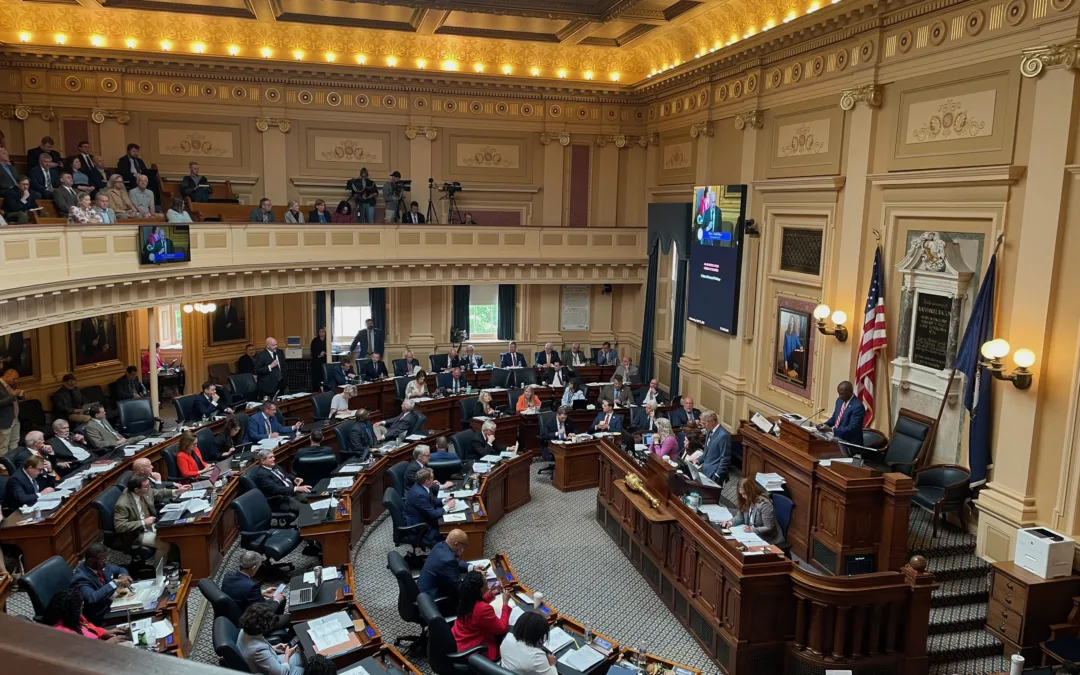
Since the federal government expanded unemployment benefits for those impacted by the COVID economic crisis last year, the VEC has paid out more than $14 billion in aid to Virginians.
Depending on where you call home, the cost of living in Virginia can get pretty high. The fair market rent for a one-bedroom apartment, for example, is over $1,000 a month. Tack on an additional $200 a month for utilities (because people typically spend about 20% of their rent on water, gas, electricity, etc.), and covering the basics of having a safe place to stay can feel out of reach—and especially if you’re unemployed.
For the record number of Virginians who lost their jobs last year at the peak of the pandemic-induced economic crisis, federal unemployment benefits were a much needed lifeline. First approved in 2020, the boost was extended in President Joe Biden ’s American Rescue Plan earlier this year. On Sept. 4, however, those programs—some of which also helped Virginians who typically would not be eligible for aid—will end.
Why Are Extended Unemployment Benefits Ending?
In a letter to Congress, the Biden administration reminded states the expanded benefits were meant to be temporary. Virginia isn’t alone in the reduced funding. Discussing next steps for states, the heads of the Treasury and Labor departments emphasized the importance of focusing on local needs.
“There are some states where it may make sense for unemployed workers to continue receiving additional assistance for a longer period of time, allowing residents of those states more time to find a job in areas where unemployment remains high,” Secretaries Janet Yellen and Martin Walsh wrote in their letter. “The Delta variant may also pose short-term challenges to local economies and labor markets.”
They also pointed out that the American Rescue Plan allocated $350 billion to state and local governments to support continuing response to the pandemic.
“Nearly one year after the virus first arrived in the Commonwealth, we’ve built momentum in Virginia and across the country in our fight against the virus and in our economic recovery,” said Rep. Abigail Spanberger (D) in a press release in March. “This legislation provides a major vehicle for maintaining this momentum.”
In fact, Gov. Ralph Northam called a special legislative session in August to decide how to use the state’s American Rescue Plan funding. The largest chunk, $862 million, went toward helping to replenish the state’s unemployment insurance trust fund. The budget plan signed into law by the governor also included $73.6 million to help improve operations at the Virginia Employment Commission (VEC).
Nearly 1.8 million residents have filed unemployment claims since March 2020, and women and people of color have been disproportionately affected by job losses.
While Virginia’s unemployment rate currently sits at 4.2%—a significant decline from its pandemic peak of 11.3% last April—there are still tens of thousands of people receiving jobless benefits.
Which Programs Are Ending?
The amount of money residents receive each week in state unemployment insurance is determined by their taxable wages for the year prior to being unemployed. Thanks to federal funding, many Virginians saw more money in their weekly checks. According to the VEC, more than $14 billion has been paid out in economic support to Virginians during the pandemic.
Some people were newly eligible for payments when they wouldn’t have been in previous years because of the federally funded Pandemic Unemployment Assistance program. Gig workers and freelancers whose income can be misinterpreted, or part-time workers who were unable to get full employment elsewhere, became eligible for unemployment, and the maximum number of payable weeks was extended to 79 weeks from 50 weeks.
RELATED: ‘It’s a Moral Issue’: Virginia Families Need Affordable Child Care and Paid Leave
Another program that specifically targeted gig workers and freelancers is the Mixed Earner Unemployment Compensation. It was created by Congress in December 2020 to help people who make a living through both traditional W2 employment and self-employment by offering a supplemental $100 weekly benefit. This was particularly helpful for workers who took up part-time work, such as driving for Lyft and Uber, and saw a decrease in demand because of COVID-19.
The two other federal programs coming to an end are the Federal Pandemic Unemployment Compensation, which provided an additional $300 in weekly payments on top of state benefits, and the Pandemic Emergency Unemployment Compensation (PEUC), which extended the benefits for individuals who exhausted their weekly entitlement before returning to the workforce. Both are from the March 2020 CARES Act and subsequent funding.
What Is the Impact of These Programs?
Earlier this year, many Republican-controlled states cut federal unemployment benefits in an effort to fill job vacancies. Even locally, some conservative mayors have pointed to that assistance as the reason why some industries have found it difficult to staff up.
“One of our iconic restaurants, Mary’s had to close due to lack of people to work there,” Mayor of Virginia Beach Bobby Dyer told 13 News Now in April. “The blessing and the curse was the unemployment people were getting. People elected not to go back to work even though they had the opportunity.”
But recent research shows states with extended unemployment benefits experienced greater job growth since April compared to states that cut benefits.
According to the Economic Policy Institute: “Between April and July, states that cut UI benefits averaged overall job growth of 0.9%. States that maintained the full federal UI benefits saw average job growth of 1.6%.”
In other words, cutting the expanded unemployment support did not force people back to work.
Where Does Virginia Go From Here?
Economic recovery is far from over, and we are just seven weeks away from Election Day in Virginia. However, with the emergence of the Delta variant and the rising number of COVID cases, the future creeps back toward uncertainty.
“We don’t know what the fall is going to bring, but we do know it’s not going to bring a full recovery that suggests people don’t still need support,” Julie Kashen, a senior fellow and director for women’s economic justice at the Century Foundation, told Vox.
Terry McAuliffe, former Virginia governor and current Democratic candidate, has essentially narrowed his plan for the economy down to three points: “Good Jobs, Raising the Minimum Wage, and Paid Sick Days for All Virginians.” It seems to be a continuation of his previous term’s successes, like helping fund 200,000 jobs.
His opponent, Republican candidate Glenn Youngkin, has little specifics on Virginia’s economic growth plan, aside from wanting to lower taxes. While that may sound great, tax cuts could mean gutting public services and education.
While McAuliffe has four years of policy execution and experience, Youngkin claims he will create 400,000 new jobs during a four-year term in office with little-to-no detail.
Early voting starts soon in Virginia, and the next person in the governor’s mansion is going to make a huge difference in how much further the state goes in its economic recovery.
Politics

Youngkin, Democrats to start over on budget talks
The Republican governor stood with Democratic leaders in the General Assembly on Wednesday in a bid to ease tensions over their budget debate....

VIDEO: Domestic abuse victims speak out against the gun law bills Gov. Glenn Youngkin vetoed
Senate Bill 47 and House Bill 46 aim to close the loophole that allows offenders to transfer their firearms to someone else instead of relinquishing...
Local News

Virginia verses: Celebrating 5 poetic icons for National Poetry Month
There’s no shortage of great writers when it comes to our commonwealth. From the haunting verses of Edgar Allan Poe, who found solace in Richmond's...

Join the fun: Recapping Family Literacy Night’s storybook adventures
When’s the last time you read a book aloud with a loved one? If it’s difficult to answer that question, then maybe it’s time to dust off that TBR...




